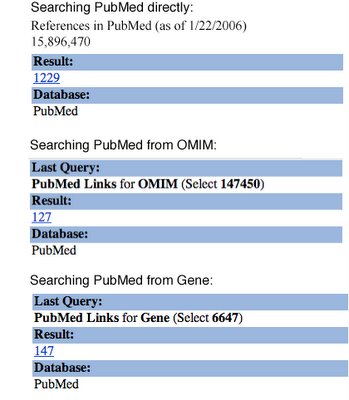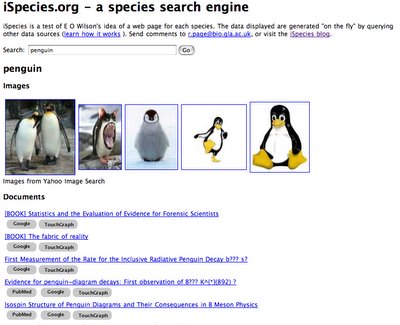It rains all the time in Seattle; we should have plenty of rainbowsBut we don't. And the rainbows we do have are getting harder to see. This year, the University of Washington had only 118 black students in a class of 5,000 freshmen (
1).
Somewhere, over the rainbow, way up highThese appalling kinds of numbers bring occasional guilt attacks on the scientific establishment and institutions of higher education. They belabor and bemoan the all-white faces that appear in the University classroom. They stomp around and give a bit of lip service to the idea of bridging the gap and recruiting. But, after a few mass mailings to garbage cans around the country and some fancy new web pages, they throw up their hands and declare that they tried but the students are nowhere to be found.
Whatever the problem, somewhere down the line, someone isn't trying hard enough.
The Seattle school district enrolls roughly 46,000 children (
2,
3), shouldn't we be able to find more than 118 black kids, who want to go to UW, in Seattle alone?
Let's do the math. Only 41% of the kids enrolled in Seattle schools are white; 22% are black (
2). With a few crude estimates, we can calculate that, if 1/13th of the kids in the district graduate every year (
probably a high estimate), and 22% are black, that would be almost 778 black kids. If even 25% of those kids were eligible for the UW, that would give us 194, or almost 200 black freshman, almost
twice as many as the number that started at the UW this year.
Of course, even if all 194 potential black freshmen did go to the UW, only
some would major in science. Still, if we don't start filling the pipeline, there will never be rainbows appearing in the lab.
What happened to all the black students from Seattle?Maybe we could find out by working backward. We know students are more likely to get accepted into college if they take challenging courses in high school. That makes sense. So black kids should take challenging courses in high school, right? Got it. But do they? Can they?
It all depends on middle school.Entrance into advanced high school courses requires that a student must do well on the eligibility tests. Entry into some of the science programs, like the acclaimed biotechnology academy at Ballard High School, requires that a student be eligible for advanced math.
That makes sense, you need to know math to do science. All kids have the same opportunity to take the advanced math in middle school and learn the material for the test, right?
Wrong.
As a parent of a Seattle middle schooler, I've become acutely aware that kids can get recommendation letters from their teachers, meet the standard on the WASL, and place above the 97th percentile on the math portion of the Iowa Test and not be able to get into honors math in middle school because of limited space and a single Spectrum test. (Spectrum is an advanced program for kids with above average intelligence. Achieve is the McClure Middle school version of Spectrum. Seattle has another special program for
really smart kids (APP) but I won't discuss that here.)
Blocking the rainbow from viewPart of the problem comes from block scheduling. Since kids are grouped in schedule blocks as Achievers or non-Achievers (
is this a slight language problem or am I imagining things?), they cannot take advanced math unless they score well on all portions of the Spectrum test.
In one fell swoop, kids who are weak in spelling but strong in math are rendered (
potentially) ineligible for advanced high school math programs. Kids can catch up. At least one of eighth grade teacher is trying to help, but why not let kids who want to take advanced math, take advanced math to begin with? Why leave kids bored and hanging and make them repeat 4th and 5th grade math all over again?
If kids could take one higher level class, rather than the double-barreled, homework intensive, combination of Achieve Language Arts and Achieve Math, maybe more kids could enroll in one or the other. Maybe this option would even minimize some of the stress and anxiety that some kids in the Achieve program experience.
Oops, you're at the wrong end of SpectrumHonors math at McClure Middle School, and most likely other Seattle middle schools, as well, is mostly limited (at least in 6th grade) to kids who are in Spectrum.
If there is space, after filling the class with the Spectrum kids and kids who do well on the Spectrum test, other kids are allowed to join the class. Most of the kids, though, come straight from Spectrum classes in elementary school. Those kids, who are already in Spectrum, do not have to take a test. They are automatically in. As for the kids who do take the test, it gets more challenging at every grade level. The 5th grade version is far beyond than the test most Spectrum kids took in kindergarten.
Non-Spectrum kids have an opportunity, but
only if there is space. Spectrum kids automatically have first dibs on all spots.
What's the problem? you might ask. Don't all kids get an equal chance to be in Spectrum?
Why is Spectrum at one end of the rainbow?Let's continue our journey back in time and see what we find.
How do kids get into Spectrum in the first place?
The Spectrum track begins in kindergarten. Sometime in October, only a few weeks after school begins,
really savvy parents fill out an application to have their kids tested for Spectrum. Once kids are in the program, they stay in.
Most of the kids are tested before they can read?
Right. The kids are tested in kindergarten.
Don't all kids take the test? No. Kids
only take the test if their parents know about the deadlines and they apply for it. If a family doesn't have a stay-at-home parent who can attend school meetings and volunteer at the school during the day, they might miss this bit of insider information. Some Seattle PTAs even hold their meetings during the day, when
it's more convenient. Like the fraternities of old, some modern day PTA's could be called the secret societies of the school system.
Roughly half of the kids who attend McClure live in single parent households (
3). Needless, to say, those single parents are probably
not staying at home. It would be interesting to know how many of those kids ever took the Spectrum test, in kindergarten, or later.
Other parents have commented that kids in the middle school version of Spectrum (called "
Achieve" at McClure) are almost all (
if not all) white; where slightly over half (51%) of the kids at McClure not. It seems plausible, to me, that at least a few of the 100 non-white kids in the McClure 6th grade class, might be interested in advanced work, if they had an opportunity to try.
Aren't teachers supposed to encourage students to take the Spectrum test? Maybe, but I've never known this to happen. I have two children in Seattle schools and I've never seen high scores on the ITBS, or Direct writing assessment tests, translate into recommendations to try Spectrum. I saw quite the opposite. High stakes WASL testing and No Child Left Behind are a strong disincentive. No elementary school wants to lose a kid who might pass the WASL.
Elementary schools are also friendly nurturing places. Not all parents (or kids) want to change elementary schools, even if it means the opportunity to be in Spectrum.
Still, parents have a few years to figure out that Spectrum tests are in October and if kids miss the test one year, they can take a harder test the next.
In fact, some kids do exactly that. There are parents who have their kids take the Spectrum test every year, as a matter of practice. These parents may opt to keep their kids at the nearby elementary school, but they're not going to have their kids face the determining factor for middle school opportunities, unprepared. Especially, since the Spectrum test is the one test that will be used to determine if kids are eligible.
I've heard it argued that the assorted rainbow of kids wouldn't do well on the Spectrum test anyway, even if all kids took the test. Perhaps the non-verbal, kindergarten, version of the test might be fraught with cultural bias and other scary things.
I'm reluctant to arrive at conclusions, though, when the experiment has yet to be tried.
Certainly, it's wrong for the school district to exclude kids from opportunities based on a single test.
But what do we do when there are limited numbers of spots in advanced classes? How do we give all kids an equal chance to work up to their potential?
Here's one idea:We could tweak the registration system. A limited number of spaces in advanced classes might not be as great a problem if the middle schools could work together. Kids could register for advanced classes in either math, Language Arts, or both, as their first choice (rather than the middle school) and list their middle schools second. That way, if one school's advanced class filled up, kids, who want opportunities, could go to an advanced class at another school.
No doubt there are other, and perhaps better, solutions. Somehow kids who want to work harder and take classes like advanced math in middle school should have that chance.
After all, it's sure bet that if you don't take the opportunity to look, you'll never see a rainbow.
References1. Nick Perry "Bigger black enrollment still only a dream for UW"
Seattle Times, Jan. 16th, 20062. Washington State Report Card. Accessed Jan 27th, 2005.
3. Seattle Schools, 2004 Demographic Survey, McClure Middle School Accessed Jan 27th, 2005.
Subject: Educationtechnorati tags: education





